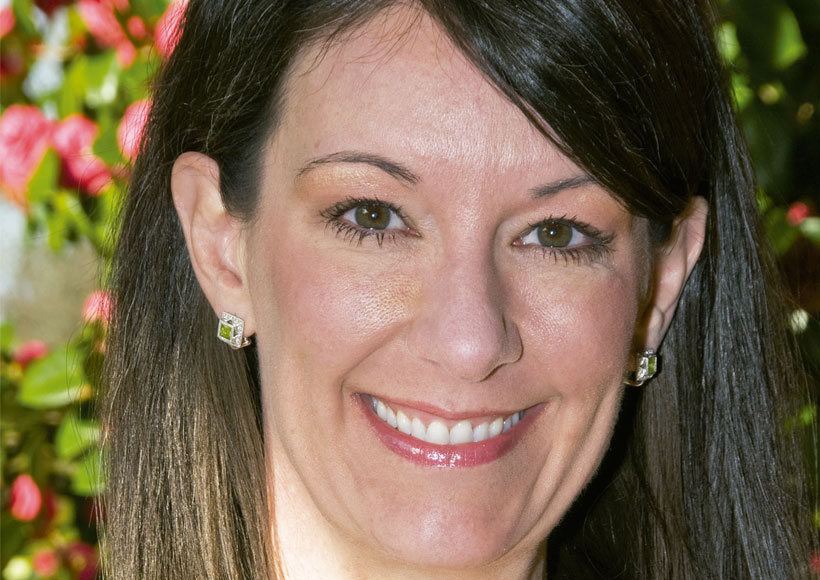// Interview: Colette Peters
Director of the Department of Corrections, Oregon State, United States of America
JT: In a recent article (Notes from the Field: Prison Reform, Investing in People: Improving Corrections Staff Health and Wellness, 29th August 2018), you highlighted the importance that scientific research has in the decision-making process for the Oregon Department of Corrections.
What major decisions did you take that were based on scientific evidence? And what major transformations occurred in the system as a result?
CP: Employee wellness is the Oregon Department of Corrections (DOC) most important strategic initiative and we use data to inform our decision-making. When I first became Director, we had four team members commit suicide in an 18-month period. In grieving this terrible loss, we realised that no one in the United States was studying the issue of correctional professional health and mental health and we knew that needed to change.
Not only was no one studying the issue, no one was talking about it either. Why? Because the men and women who work on my team are as tough as nails. End of story. My peers, along with other corrections directors were dealing with the same issues: funerals, high divorce rates, decertification because of driving-under-the-influence violations, and drug possession.
While we had local efforts, we certainly weren’t putting systems or programmes in place agency-wide to give our employees the tools to manage the stress of the job and have long careers followed by long retirements. It was then that I realised we needed to start with our corrections professionals: inside our prisons, in our support teams, and in the community.
Several years ago, we partnered with Portland State University (PSU) and Oregon Health Sciences University (OHSU) to help us better understand the mental health and physical well-being of our team. PSU learned that one in three of our correctional staff has symptoms of Post-Traumatic Stress Disorder (PTSD). This is greater than police, fire, even those in active military duty.
OHSU conducted physical examinations of 220 correctional officers at four prisons in Oregon. As a workforce in general, we are overweight. Our cholesterol and triglycerides are through the roof, our good cholesterol through the floor, and towards the end of our career, we are more likely a candidate for a heart attack than not. For those of you that have worked in a prison, I don’t think you’ll be surprised to learn the study found that, as prison security levels increased, so did correctional officer stress, unhealthy alcohol use, and missed days of work. The findings were alarming.
To combat these challenges, OHSU suggested that an evidence-based, easily-implemented, team-centred health and safety programme would work. OHSU piloted an intervention programme among 81 correctional officers. This 12-week programme, entitled “Healthy Team Healthy U,” includes curriculum on nutrition, body weight, exercise, strength training, and stress management. Results showed that this kind of approach worked. Simply talking about and becoming mindful of our health can, and did, become a ‘lightbulb’ moment.
We partnered with Universities to help us better understand the mental health and physical well-being of our team.
JT: At the end of May 2018, the news reported progress made in reducing the use of solitary confinement in Oregon prisons.
Could you please detail the developments that have taken place in Oregon’s prisons regarding the issue of solitary confinement and what were the underlying motivations?
CP: The practice of using special housing has been the subject of scrutiny because of the detrimental impact on incarcerated people and our employees. We also know that 95% of the men and women in our custody will be released back into our communities. Housing people in segregation for long periods of time is not conducive to preparing these individuals for re-entry.
In 2015, we teamed up with The Vera Institute of Justice in the Safe Alternatives to Segregation Initiative, a partnership which includes four other local and state corrections agencies willing to address this difficult issue. We have significantly reduced the number of people in special housing.
As of April 2018, DOC had 269 vacant special housing beds. Historically these beds have been filled, but DOC has made progress and sustained vacancies. One of our most notable changes in 2018 was to repurpose one Intensive Management Unit (IMU) at our largest prison Snake River Correctional Institution in Eastern Oregon. These 72 beds were modified from segregation beds to an honour housing unit.
JT: On the ODOC website we can read that “the Oregon Department of Corrections is recognised nationally among correctional agencies for providing adults in custody with the cognitive, educational and job skills needed to become productive citizens when they transition back to their communities”.
What is it that sets your department apart from other States and what outcomes would you like to highlight?
CP: Staff and their personal well-being are the primary focus of our agency. Every opportunity I get, I talk about the wellness of the 4,800 people who work for DOC. I want our staff to have a long and fulfilling career and then retire and live a long life, enjoying time with their friends and family. Unfortunately, this career choice can take a toll.
We are also at the vanguard of how we house and manage the transgender men and women in our custody thanks to our Transgender and Intersex Committee. This committee determines appropriate and safe housing for transgender and intersex inmates. When identifying these criteria, committee members consider medical history, mental health status, inmate self-identification, the safety of the inmate and other inmates, and observation of inmate behaviour and any other relevant information. Each housing placement is determined on a case-by-case basis. Once housing is identified by the Transgender and Intersex Committee, a hold is placed in our system to ensure the individual is not moved without the committee’s approval. Our transgender and intersex inmates can be housed in any facility across the state – we do not house them in one facility or housing unit.
JT: In the scope of the U.S.-European Criminal Justice Innovation Programme, you have taken part of a delegation from Oregon that has visited prisons in Norway.
What did you gain from witnessing the prison situation in Norway? To what extent does that exchange programme really result in changes?
CP: My agency had a unique and exciting opportunity to participate in the U.S.-European Criminal Justice Programme, sponsored by the Prison Law Office and developed by the Criminal Justice & Health Programme at the University of California San Francisco, during the Fall of 2017.
Oregon DOC staff and a legislative delegation travelled to Norway and were exposed to innovative policies, programmes, and systems regarding criminal justice systems. We toured five of Norway’s institutions as well as their headquarters and training academy and participated in panel discussions with European colleagues to learn about different European systems’ approaches to sentencing, correctional facility policies, health care, and community reintegration.
In September 2018, we had the opportunity to visit Norway again and participate in an exchange and immersion programme. Front-line staff from our institutions took part in the trip, which focused on segregation, reduction and reform. Having these team members participate was fundamentally key to the success of the exchange since no change can be made effectively without front-line staff buy-in. Our goal is twofold: make changes to our correctional practices for the improvement of staff wellness, and for the men and women in our custody. Our team looked at the Norwegian Correctional Service for innovative ways to reduce the number of adults in custody (AICs) assigned to our special housing units and the length of time they spend in these units. Additionally, the Oregon team aims to reduce AIC isolation and idleness while housed in such units by addressing behaviour using new and progressive methods.
Recently, our leadership team met and brainstormed ways to bring the concepts of humanising and normalising into our institutions. Many fantastic ideas were discussed – everything from allowing personal cell phones into the facilities, to planting more trees in the recreation spaces, to using first instead of last names with the AICs. We are at an extraordinary time for corrections. This is the time to make a change that will keep our institutions safe and increase the opportunity for the adults in our custody to become successful neighbours upon release.
JT: What are the major challenges facing Corrections in the United States in general and the State of Oregon in particular?
CP: Oregon DOC has similar challenges to other states and when I speak with other directors, we are collectively concerned about the recruitment and retention of new staff – especially of correctional officers and nurses. Today, we have a strong economy and there is stiff competition among public safety agencies for qualified people.
In Oregon, almost 50% of my staff are eligible to retire within the next five years. Adding to the dilemma, the likelihood that millennials will stay with an employer until retirement is low. More and more of our workforce do not want to shift work or to be away from their family.
Staff overtime, both mandatory and voluntary, continues to be an issue for us. I do not want my team working 16-hour days – that isn’t good for them, their families, or the AICs. Related to the overtime issue is the ability to take vacation time. With the shortage of staff, there are times when team members are unable to take a vacation. The ability to take time off and be with your family and friends is an important aspect of wellness and my team and I will continue to work on this issue.
We have defined what success will look like in ten years and have identified the targeted work we will need to complete to achieve that goal.
JT: What are your expectations for the future of the Oregon Department of Corrections?
CP: I’ve had the pleasure to be the Director of the Oregon Department of Corrections for the last seven years and I’m looking forward to the next seven because we have so many exciting initiatives and projects on the horizon. We have created a strategic plan, which we’ve called Destination 2026. It is a roadmap for our future that provides a filter for decision-making and establishing priorities; it will also help to continue solidifying our organisational identity and culture.
Destination 2026 is broken down into five key areas: people and skills, employee wellness, culture, outcomes, and re-entry and supervision. For each of these areas, we have defined what success will look like in 10 years and have identified the targeted work we will need to complete in order to achieve that goal. We want to become the public safety employer of choice with innovative employees who transform lives.
//
Colette Peters has served as Director of the Oregon Department of Corrections (DOC) since February 2012. She was named to lead DOC after serving as Director of the Oregon Youth Authority for several years. With more than 20 years in public safety, she is responsible for managing a biennial budget of $1.8 billion. She also chairs the American Correctional Association’s Supporting Healthy Culture Committee and serves as national treasurer of the Association of State Correctional Administrators. Mrs Peters earned her master’s degree in Criminal Justice from the University of Colorado, Denver, and holds a bachelor’s degree in Psychology.



